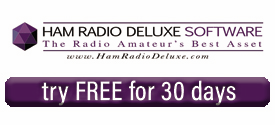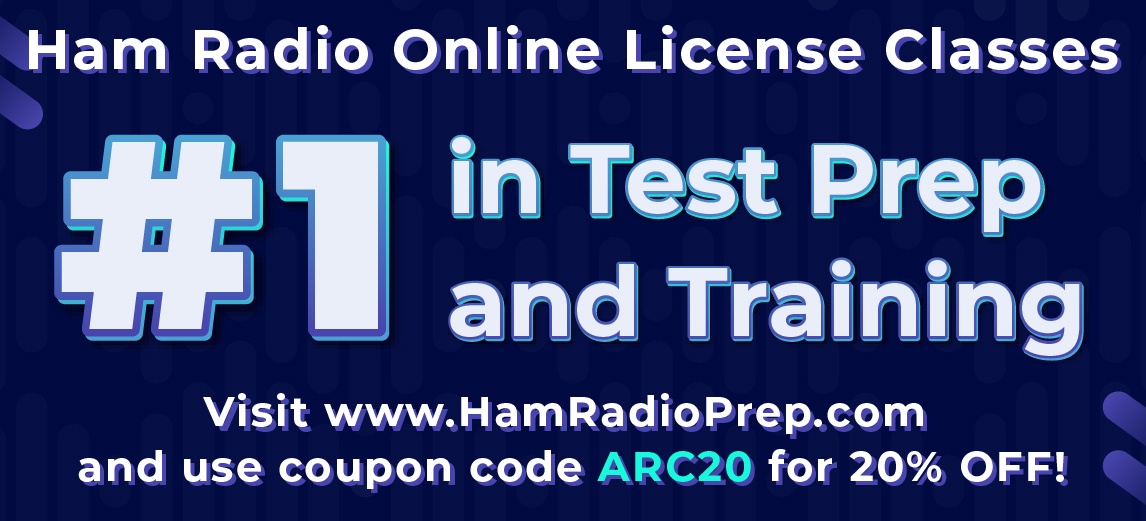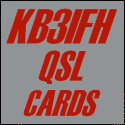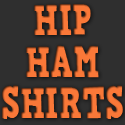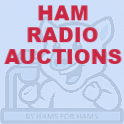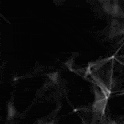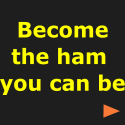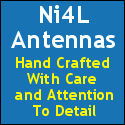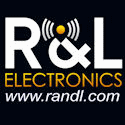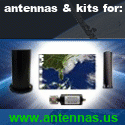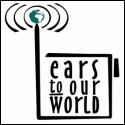Archive for the ‘arrl’ Category
 Long Duration M-Class Flare, and More (Livestream)
Long Duration M-Class Flare, and More (Livestream)
This livestream recording is from September 1, 2024 – the NW7US Radio Communications Channel Livestream. We do this livestream every Sunday at 21:15 UTC. Here is the link to the livestream from this past Sunday:
The livestream list is here:
https://www.youtube.com/@nw7us/streams
I hope to see you in our livestream live chat, during the next session on Sunday, at 21:15 UTC. See you there!
 Livestream: Space WX, Propagation, Amateur Radio – Sundays
Livestream: Space WX, Propagation, Amateur Radio – Sundays
 Exploring Shortwave Radio Signals: A Peek into Non-Local Communications
Exploring Shortwave Radio Signals: A Peek into Non-Local Communications
Curious about what you can hear on shortwave ham radio? This video is a brief survey of the diverse world of communications on the shortwave spectrum. Expand your radio horizons and enhance your emergency communication preparedness by tuning in to the world of shortwave ham radio.
If you’ve started delving into radio communications beyond local stations and channels, like VHF and UHF, you’re in for a treat. Shortwave radio opens up a whole new realm of signals to explore, including emergency communications vital during natural disasters.
Shortwave radio covers a range of radio frequencies from 3 kHz to 30 MHz. This spectrum is home to a diverse array of radio signals that cater to various communication needs, making it a hub of activity and connectivity.
Within these high frequencies, you can tune in to a multitude of transmissions, from transoceanic air traffic control communications to the chatter of ships navigating the vast seas. Imagine hearing the voices of fishermen, much like those on your favorite reality TV shows about high-seas fishing adventures, along with military communications and the vibrant world of amateur radio enthusiasts.
One of the remarkable features of high-frequency (HF) radio is its ability to propagate signals over long distances, transcending line-of-sight limitations. This means that HF radio enables communication between different regions and even continents, fostering connectivity across vast distances.
During times of crisis and natural disasters, shortwave frequencies become invaluable for emergency communications. When local infrastructure falters or is disrupted, shortwave radio serves as a vital lifeline, facilitating critical two-way communications in and out of disaster-stricken areas.
Explore the fascinating realm of shortwave radio, where distant voices blend with essential information, bridging gaps and connecting communities in times of need. Uncover the power of HF radio to transcend boundaries and provide lifelines when they are needed most.
In this video, I give you a glimpse of the voice and data transmissions I pick up on my high-frequency amateur radio transceiver (in this video, an Icom IC-7000). In later videos, I will dive deeper into specific types of HF communications, such as aeronautical trans-oceanic signals.
 Go Back In Time – Vintage Film
Go Back In Time – Vintage Film
Turning back time to virtually witness a critical historic method of shortwave communication using the fundamental mode of continuous wave modulation. This is a film from 1944, teaching the basics of Morse code, for military comms.
What is the proper (and most efficient) technique for creating Morse code by hand, using a manual Morse code key? Ham radio operators find Morse code (and the ‘CW’ mode, or ‘Continuous Wave’ keying mode) very useful, even though Morse code is no longer required as part of the licensing process. Morse code is highly effective in weak-signal radio work. And, preppers love Morse code because it is the most efficient way to communicate when there is a major disaster that could wipe out the communications infrastructure.
While this military film is antique, the vintage information is timeless, as the material is applicable to Morse code, even today.
Credits: National Archives and Records Administration
Department of Defense. Department of the Army. Office of the Chief Signal Officer. (09/18/1947 – 02/28/1964)
ARC Identifier 36813 / Local Identifier 111-TF-3697. PRINCIPLES AND BASIC TECHNIQUE FOR GOOD, RHYTHMIC SENDING 0F MORSE CODE BY OPERATING THE HAND KEY.
Made possible by a donation from Mary Neff.
 Modern Amateur Radio Hobby – An Introduction
Modern Amateur Radio Hobby – An Introduction
This video is an introduction to an international public-service and technology hobby known as ‘amateur radio’ (or ‘ham radio’).
Amateur radio (also called ham radio) describes the use of radio frequency spectrum for purposes of non-commercial exchange of messages, wireless experimentation, self-training, private recreation, radiosport, contesting, and emergency communication. The term “amateur” is used to specify “a duly-authorized person interested in radioelectric practice with a purely personal aim and without pecuniary interest;” (either direct monetary or other similar rewards) and to differentiate it from commercial broadcasting, public safety (such as police and fire), or professional two-way radio services (such as maritime, aviation, taxis, etc.).
The amateur radio service (amateur service and amateur-satellite service) is established by the International Telecommunication Union (ITU) through the Radio Regulations. National governments regulate technical and operational characteristics of transmissions and issue individual stations licenses with an identifying call sign. Prospective amateur operators are tested for their understanding of key concepts in electronics and the host government’s radio regulations. Radio amateurs use a variety of voice, text, image, and data communications modes and have access to frequency allocations throughout the RF spectrum to enable communication across a city, region, country, continent, the world, or even into space.
Amateur radio is officially represented and coordinated by the International Amateur Radio Union (IARU), which is organized in three regions and has as its members the national amateur radio societies which exist in most countries. According to an estimate made in 2011 by the American Radio Relay League, two million people throughout the world are regularly involved with amateur radio. About 830,000 amateur radio stations are located in IARU Region 2 (the Americas) followed by IARU Region 3 (South and East Asia and the Pacific Ocean) with about 750,000 stations. A significantly smaller number, about 400,000, are located in IARU Region 1 (Europe, Middle East, CIS, Africa).
Activities and practices
The expansive diversity found in the amateur radio hobby attracts practitioners who have a wide range of interests. Many hams begin with a fascination of radio communication and then combine other personal interests to make the pursuit of the hobby rewarding. Some of the focal areas amateurs pursue include radio contesting, radio propagation study, public service communication, technical experimentation, and computer networking. But, that is just a sampling of interest areas found in the hobby.
Amateur radio operators use various modes of transmission to communicate. The two most common modes for voice transmissions are frequency modulation (FM) and single sideband (SSB). The FM mode offers high-quality audio signals, while SSB is better at long distance communication when bandwidth is restricted.
Modern personal computers have encouraged the use of digital modes such as radioteletype (RTTY) which previously required cumbersome mechanical equipment. Hams led the development of packet radio in the 1970s, which has employed protocols such as AX.25 and TCP/IP. Specialized digital modes such as PSK31 allow real-time, low-power communications on the shortwave bands. More robust digital modes have been invented and improved, including such modes as Olivia, JT65, and WSPR.
NASA astronaut Col. Doug Wheelock, KF5BOC, Expedition 24 flight engineer, operates the NA1SS ham radio station in the Zvezda Service Module of the International Space Station. Equipment is a Kenwood TM-D700E transceiver.
Amateur radio operators, using battery- or generator-powered equipment, often provide essential communications services when regular channels are unavailable due to natural disasters or other disruptive events.
This video comes to us via Canada, and is used by permission from Bernard Bouchard – / ve2sms – The original video was published on Feb 28, 2013.- Website is https://www.ve2cwq.ca/amateur-radio-club-ve2cwq/
Voici maintenant, la version complète du documentaire «La radioamateur» d’une durée de 11 minutes. On y aborde toutes les activités sur le monde de la radioamateur. Ce vidéo a été produit par le Club Radioamateur VE2CWQ / Canwarn-Québec. Pour information: https://www.ve2cwq.ca/
Connect with me at https://NW7US.us
USA Amateur Radio information: http://ARRL.org
 1939 Film: Morse Code on HF in New Zealand (Historical)
1939 Film: Morse Code on HF in New Zealand (Historical)
Before modern radio broadcasting, the trails were being blazed both in public broadcast, but also critical links out of the local area. Here’s a side-look back in time…. in this 1939 Film: New Zealand Shortwave Communications; Morse code (CW)
The romance of the radiotelegraph service (in this video, the service in New Zealand) is a fascinating aspect of communication history. The use of shortwave, longwave, and medium frequency spectrum for communication, particularly through Morse code, played a significant role in connecting people across vast distances. This service utilized the high-frequency spectrum known as “shortwave” (from 3 MHz up to 30 MHz) as well as the longwave (30 kHz to 300 kHz) and medium frequency spectrum (300 kHz to 3 MHz).
This short film is from 1939, and captures the essence of communication at that time in history, to and from New Zealand using shortwaves and Morse code. It showcases the importance of the radiotelegraph service in enabling long-distance communication during that era. The transition from Morse code via spark-gap communications to continuous wave (CW) modulation marked a significant advancement in the technology and efficiency of radio communication.
It’s incredible to see how technology has evolved over the years, transforming the way we communicate and connect with each other globally. Films like these provide a glimpse into the past and remind us of the ingenuity and dedication of those who worked in the radiotelegraph service to ensure effective communication across the seas.
This film is a 1939 Government film scanned to 2K from a 16mm combined B/W reduction print.
 New to Amateur Radio? What is a Repeater?
New to Amateur Radio? What is a Repeater?
If you have not yet explored ham radio repeaters, this might be interesting to you.
What is an amateur radio repeater and how do they work?
In this video, with a non-amateur-radio viewer in mind, I chat about the very basic concepts of a repeater.
It is filmed in a relaxed, “ride along with me,” format.
Want to learn more about ham radio (amateur radio)?
Visit: http://nw7us.us/arrl

